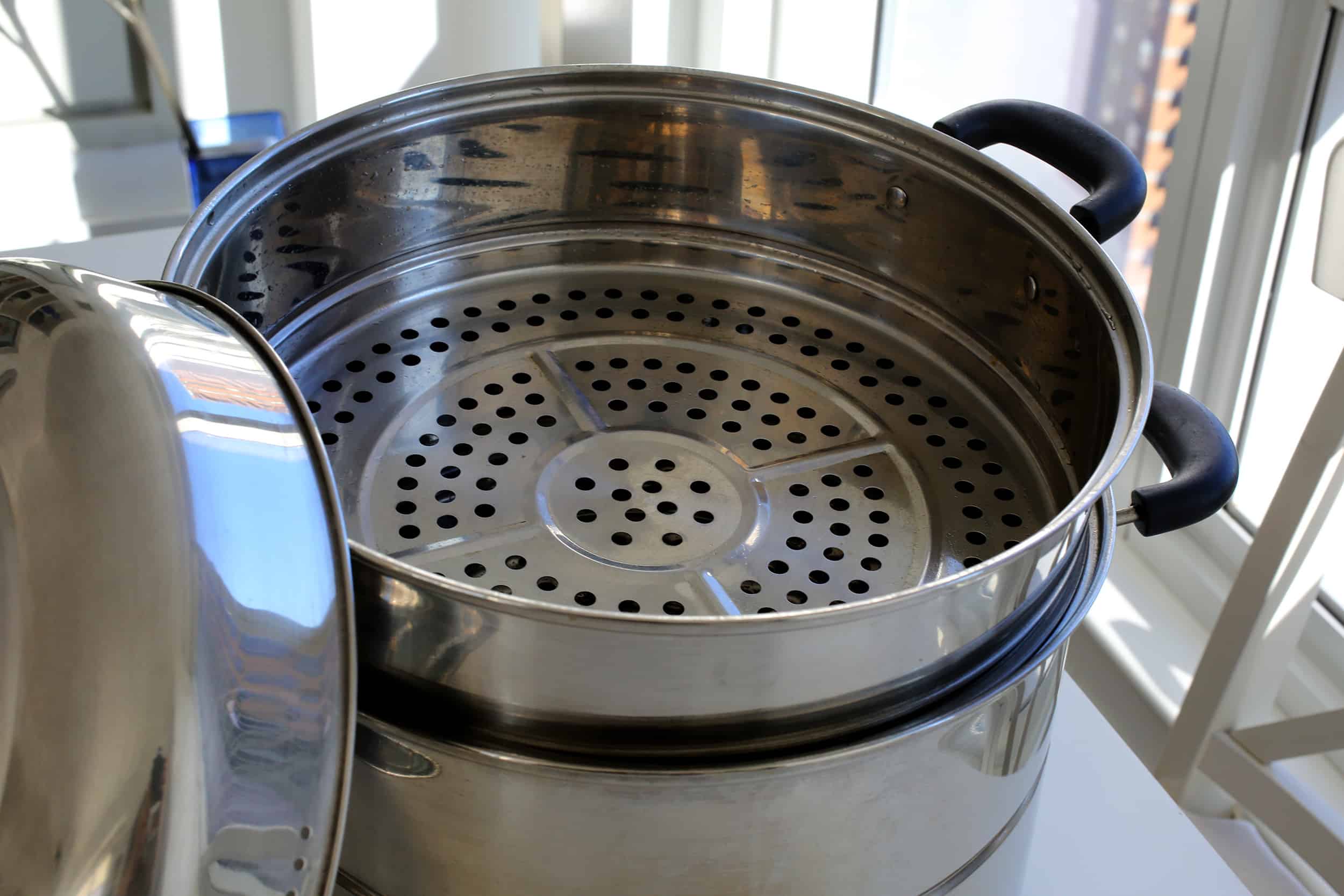

Articles
How Does A Steamer Work For Food
Modified: February 20, 2024
Discover how a steamer works for food in this informative article. Learn about the benefits and techniques of steaming and elevate your cooking skills.
(Many of the links in this article redirect to a specific reviewed product. Your purchase of these products through affiliate links helps to generate commission for Storables.com, at no extra cost. Learn more)
How Does A Steamer Work For Food
Steaming food is a healthy and efficient cooking method that has been used for centuries. Steaming involves cooking food in a sealed environment with hot steam, which helps retain the nutrients, flavors, and natural colors of the ingredients. In this article, we will explore the basics of how a steamer works for food and the benefits it offers.
Steaming is a simple and straightforward process that requires minimal effort. The basic premise of steaming involves heating water to produce steam, which then cooks the food. Steamers come in various shapes and sizes, from stovetop steamers to electric steamers, each with their own unique mechanisms.
A typical steamer consists of a base unit with a water reservoir, a heating element, and a rack or trays to hold the food. Some steamers also come with timers and temperature control options, allowing you to customize the cooking process according to your preferences.
The mechanism of a steamer revolves around the principle of steam generation and circulation. When the water in the steamer’s reservoir is heated, it turns into steam, which rises and fills the cooking chamber. The steam then circulates around the food, cooking it evenly and gently.
One of the main benefits of steaming food is its ability to preserve the nutritional content of the ingredients. Unlike other cooking methods that require oils or fats, steaming allows you to cook food without adding any extra calories. The steam effectively transfers heat to the food, ensuring that it cooks thoroughly while retaining its natural vitamins, minerals, and antioxidants.
Another advantage of steaming is that it helps retain the natural flavors and colors of the food. Since the food is cooked in a sealed environment, the flavors and aromas of the ingredients are well-preserved, resulting in delicious and vibrant dishes. Steaming also ensures that the food remains tender and moist, without becoming overly dry or brittle.
To get the best results when steaming food, there are a few tips and techniques to keep in mind. Firstly, it’s important to cut the ingredients into uniform sizes to ensure even cooking. You should also arrange the food in a single layer, without overcrowding the steamer, as this can affect the circulation of steam.
It’s recommended to start with the ingredients that require a longer cooking time and add more delicate items later. This way, all the ingredients will be cooked perfectly without overcooking or undercooking. Additionally, you can enhance the flavors by seasoning the food before steaming or adding herbs and spices to the water reservoir.
When using a steamer, it’s crucial to avoid some common mistakes. One of them is opening the lid frequently during the cooking process, as this can result in heat loss and uneven cooking. It’s also important to use the correct amount of water and ensure that it doesn’t completely evaporate while steaming.
Cleaning and maintaining your steamer is essential to ensure its longevity and optimal performance. It’s recommended to follow the manufacturer’s instructions for cleaning and descaling the steamer, as well as regularly checking the heating element and other components for any signs of damage.
To conclude, a steamer is a versatile and efficient cooking appliance that allows you to cook food in a healthy and flavorful way. By understanding how a steamer works and following a few tips, you can enjoy nutrient-rich, delicious meals with ease. So why not give steaming a try and discover the many benefits it has to offer?
Key Takeaways:
- Steaming food preserves nutrients, enhances flavors, and offers a healthier cooking option. It’s a versatile, time-efficient method that allows for easy cleanup and retains the natural textures of ingredients.
- Proper steaming techniques, such as uniform cutting, seasoning, and avoiding common mistakes, ensure delicious and nutritious meals. Regular cleaning and maintenance are essential for optimal steamer performance and longevity.
Read more: How To Work A Conair Steamer
Introduction
Steaming has long been recognized as a popular and healthy cooking method, known for its ability to preserve the nutrients and flavors of food. From vegetables to seafood, steaming offers a gentle yet effective way to cook a variety of ingredients. In this article, we will delve into the world of steaming and explore the benefits it brings to your culinary repertoire.
Steaming is a cooking technique that utilizes the power of steam to cook food. Unlike other methods that require oil or direct heat, steaming relies on the natural moisture in the food and the steam’s heat to cook it. This gentle cooking process helps retain the essential vitamins, minerals, and flavors that may be lost with other cooking methods.
The concept of steaming is not a new one. In fact, it has been practiced for centuries across different cultures around the world. From the bamboo steamers of Asia to the modern electric steamers of today, steaming has evolved to fit the needs and preferences of cooks everywhere.
One of the key advantages of steaming is its ability to preserve the nutritional content of food. Since the food is not subjected to high heat or immersed in water, it retains more of its natural goodness. Steaming helps to lock in the vitamins and minerals, ensuring that your meals are as healthy as they are delicious.
Another aspect that sets steaming apart is its ability to enhance the natural flavors of the food. By using steam as the cooking medium, the flavors of the ingredients remain intact, resulting in vibrant and tasty dishes. This is especially beneficial for delicate ingredients, like seafood and vegetables, which can easily become overcooked and lose their natural taste with other cooking methods.
Steaming is also a time-efficient cooking method. With minimal preparation and monitoring required, it allows you to multitask in the kitchen while your food steams away. This is especially useful when you have a busy schedule or need to prepare multiple dishes simultaneously.
Not only does steaming offer numerous benefits for your health and taste buds, but it is also an environmentally friendly cooking method. As steam is the primary source of heat, it uses less energy compared to other methods such as grilling or frying. Additionally, the steam produced during the cooking process helps to maintain the moisture in the food, reducing the need for excessive oils or fats.
With its versatility and simplicity, steaming opens up a world of culinary possibilities. Whether you’re steaming vegetables for a side dish, seafood for a flavorful main course, or even desserts like steamed puddings, the options are endless. By understanding the basics of steaming and exploring different recipes, you can create a wide range of healthy and delicious meals to impress family and friends.
In the following sections, we will delve deeper into the mechanics of steaming, the components of a steamer, the benefits it offers, and important tips to keep in mind when using a steamer. So let’s embark on this steamy culinary journey and unlock the wonders of steaming!
The Basics of Steaming
Steaming is a cooking method that utilizes hot steam to cook food. It is a gentle and efficient way of preparing a wide range of ingredients, from vegetables and seafood to grains and proteins. The process involves the use of steam, which is generated by heating water, to cook the food in a sealed environment, ensuring that the flavors and nutrients are retained.
Steaming is a versatile cooking technique that can be performed using various types of equipment. One common method is stovetop steaming, where a pot or pan with a steamer basket is used. Electric steamers are another popular option, offering convenience and precise temperature control.
The first step to steaming is to add water to the pot or reservoir of your steamer. The amount of water needed will depend on the type of steamer you are using and the duration of the cooking process. It is important not to overfill the reservoir to avoid water from spilling into the food.
Once the water is added, it is heated to produce steam. The steam then rises and surrounds the food, cooking it evenly. The lid of the steamer is placed on top to create a sealed environment, trapping the heat and moisture inside. This helps prevent the food from drying out, while also allowing it to cook evenly.
Timing is key when steaming food. Different ingredients and cuts may require varying cooking times. It is important to follow recipes or general guidelines to ensure that the food is cooked to the desired level of doneness. Overcooking can result in mushy textures, while undercooking may leave the food raw and unappetizing.
One of the advantages of steaming is that it allows for gentle and precise cooking. The steam provides a controlled and uniform heat, helping to preserve the delicate textures and flavors of the ingredients. This is particularly beneficial for seafood, vegetables, and other delicate foods that can easily become overcooked or lose their natural qualities with other cooking methods.
Steaming also offers the advantage of being a healthier cooking option. Since no oil or fat is used during the cooking process, steamed dishes tend to be lower in calories. The vitamins, minerals, and nutrients in the food are also better preserved, compared to methods like frying or grilling where heat-sensitive nutrients can be lost.
Steaming is a relatively quick cooking method, especially for smaller and thinner cuts of food. The steam efficiently transfers heat to the food, reducing cooking times. However, thicker and denser ingredients may require longer cooking times to ensure that they are thoroughly cooked.
When steaming, it is important to handle the food with care to avoid any burns or injuries. The steam produced in the steamer can be extremely hot, so it is recommended to use oven mitts or tongs when removing the food from the steamer. Additionally, the steam can also cause burns if it is released too quickly, so take caution when opening the lid.
Overall, steaming is a versatile and healthy cooking technique that allows you to prepare a wide range of delicious dishes with ease. By understanding the basics of steaming and experimenting with different ingredients and flavors, you can unlock a world of culinary possibilities while enjoying the many benefits that steaming has to offer.
The Components of a Steamer
Steamers are specially designed kitchen appliances or cookware that facilitate the process of steaming food. They come in various shapes and sizes, each with its own set of components that work together to create a steam-filled cooking environment. Understanding the different components of a steamer can help you make an informed choice when selecting the right steamer for your cooking needs.
1. Base Unit: The base unit is the foundation of the steamer and typically houses the water reservoir and heating element. In electric steamers, the base unit may also contain temperature controls and timers for precise cooking control.
2. Water Reservoir: The water reservoir is where you add water to generate steam. The size and capacity of the reservoir vary depending on the steamer model. It is important to add the appropriate amount of water to ensure proper steaming.
3. Heating Element: The heating element is responsible for heating the water in the reservoir and converting it into steam. In electric steamers, the heating element is usually located at the base of the unit and is controlled by the temperature settings.
4. Steaming Trays/Racks: Steaming trays or racks are the platforms where you place the food to be steamed. They are designed with perforations or holes to allow the steam to circulate evenly around the food. Some steamers come with multiple trays or racks, allowing you to steam different foods simultaneously.
5. Lid: The lid is an essential component of a steamer as it helps to create a sealed cooking environment, trapping the steam inside. It is designed to fit snugly on top of the steamer, preventing the escape of heat and moisture. The lid may also have a vent or steam release valve to control the steam pressure and prevent excessive buildup.
6. Controls and Settings (Electric Steamers): Electric steamers often come with additional controls and settings for precise cooking control. These may include temperature dials, timers, and preset cooking programs. These features allow you to adjust the cooking temperature and time according to the specific requirements of your ingredients.
7. Drip Tray (Some Models): Some steamers have a built-in drip tray or collection pan beneath the steaming trays. This tray collects any excess moisture or condensation that may drip down from the food, preventing it from dripping onto the heating element and causing damage.
When choosing a steamer, consider the capacity, functionality, and ease of use. Electric steamers offer more control and convenience with their built-in features, while stovetop steamers are simple and versatile. Furthermore, there are also specialized steamers available for specific purposes, such as bamboo steamers for traditional Asian cooking or microwave steamers for quick and convenient steaming.
By understanding the different components of a steamer, you can select the appropriate model that suits your cooking needs. Whether you opt for an electric steamer or a stovetop version, investing in a quality steamer will open up a world of culinary possibilities as you explore the art of steaming.
The Mechanism of Steaming
Steaming is a cooking method that relies on the power of steam to cook food. The mechanism of steaming involves the conversion of water into steam, which then surrounds and cooks the food. This gentle and moist cooking process helps retain the natural flavors, colors, and nutrients of the ingredients.
The process of steaming begins by adding water to the reservoir of the steamer. The amount of water required may vary depending on the steamer model and the duration of the cooking process. It is important not to overfill the reservoir to prevent water from spilling into the food.
Once the water is added, the steamer is turned on, and the heating element starts to heat the water. As the water temperature rises, it eventually reaches its boiling point, resulting in the formation of steam. The steam generated rises from the heated water and fills the cooking chamber.
When the cooking chamber is filled with steam, the lid of the steamer is tightly closed, creating a sealed environment. This sealing ensures that the steam produced remains trapped inside the steamer, allowing it to evenly circulate around the food.
The steam surrounds the food, transferring heat to the ingredients and cooking them thoroughly. The gentle and moist heat helps retain the moisture within the food, preventing it from becoming dry or brittle. As the steam contacts the food, it releases its latent heat, effectively cooking the food without excessively exposing it to direct heat or high temperatures.
Since the steam evenly distributes heat throughout the cooking chamber, it ensures that the food is cooked uniformly. This helps avoid any hot spots or uneven cooking that may occur with other cooking methods. The result is tender, juicy, and flavorful dishes.
The cooking time required for steaming may vary depending on the type of food being cooked and its size. Larger and denser foods generally require more time to cook, while smaller and thinner cuts may cook relatively quickly. It is essential to follow cooking guidelines or recipes to determine the optimal cooking time for each ingredient.
One of the advantages of steaming is that it minimizes nutrient degradation. Since the food is not submerged in water or exposed to high temperatures for prolonged periods, many vitamins, minerals, and antioxidants are better preserved compared to other cooking methods. This ensures that the food retains its nutritional value and vibrant colors.
Moreover, the retention of moisture during steaming helps maintain the natural flavors of the food. As the steam surrounds the ingredients, it prevents the loss of volatile compounds that contribute to the taste and aroma of the dish.
Overall, the mechanism of steaming revolves around the generation and utilization of steam to cook food. By harnessing the power of gentle heat and moist steam, steaming offers a versatile and efficient cooking method that preserves the nutritional content, flavors, and textures of the ingredients. So, whether you’re steaming vegetables, seafood, or grains, this method allows you to create delicious and healthy meals with ease.
When using a steamer for food, make sure to evenly space out the food items to ensure they cook evenly. Additionally, check the water level periodically to prevent it from running dry.
Read more: How Do Steamer Baskets Work
Benefits of Using a Steamer
Using a steamer to cook your food offers a wide range of benefits that make it a popular cooking method among health-conscious individuals and culinary enthusiasts alike. From preserving the nutrients to enhancing flavors and simplifying the cooking process, using a steamer can revolutionize your culinary experience. Here are some key benefits of using a steamer:
1. Nutritional Retention: Steaming is a gentle cooking method that helps preserve the natural nutrients present in food. Unlike other cooking methods that involve direct heat, steaming uses steam to cook the food, reducing the loss of sensitive vitamins, minerals, and antioxidants. This means that steamed dishes can retain more of their inherent nutritional value compared to frying, grilling, or boiling.
2. Flavor Enhancement: Steaming helps preserve the natural flavors of the ingredients. As the food is surrounded by steam, it retains its original taste, texture, and aroma. Unlike boiling, which can dilute flavors, steaming allows the food to cook in its own juices, resulting in vibrant and tasty dishes. Steaming is particularly beneficial for delicate ingredients like seafood and vegetables, as it helps them maintain their fresh and distinct flavors.
3. Versatile Cooking: Steaming is a versatile cooking method that can be used for a wide range of ingredients. From vegetables and seafood to poultry and grains, a steamer can handle different types of food with ease. You can also steam multiple ingredients simultaneously by using steamer baskets or trays, allowing you to prepare complete meals in one go.
4. Healthier Cooking: Unlike frying or sautéing, steaming requires little to no oil. This makes steamed dishes lower in fat and calories, making them a healthier option. Additionally, steamed food retains its natural moisture without the need for additional fats, ensuring that the food remains tender and succulent. Steaming also reduces the formation of harmful compounds that may occur with high-temperature cooking methods, promoting overall health and well-being.
5. Time and Energy Efficiency: Steaming is a relatively quick cooking method, especially for smaller or thinly sliced ingredients. The steam conducts heat efficiently, resulting in faster cooking times compared to methods like roasting or braising. Additionally, steamers are designed to be energy efficient, using less power and heat compared to traditional oven cooking.
6. Easy Clean-up: Cleaning up after steaming is a breeze. Unlike methods that involve pots and pans covered in stubborn grease or stuck-on food, steamers require minimal cleanup. Most steamers have removable trays or baskets that can be easily washed, and the steam itself helps to loosen any food debris, making it easier to clean.
7. Retains Food Texture: Steaming helps maintain the texture of the food, especially for delicate ingredients like vegetables and seafood. The gentle heat from the steam cooks the food evenly, preserving its crispness, tenderness, and juiciness. This ensures that your vegetables remain vibrant and crisp, and your seafood stays moist and tender.
8. Cooking Convenience: Steaming is a convenient cooking method that allows you to set it and forget it. Once you’ve placed the food in the steamer and set the cooking time, you can attend to other tasks while the food cooks. This is particularly useful when preparing large meals or when you have limited time to spend in the kitchen.
Using a steamer in your cooking routine can revolutionize the way you prepare meals. From preserving nutrients and enhancing flavors to promoting healthier cooking and simplifying cleanup, the benefits of using a steamer are hard to ignore. So, why not incorporate steaming into your culinary repertoire and enjoy all the advantages it has to offer?
Tips for Steaming Food
Steaming food is a healthy and versatile cooking method that allows you to prepare delicious meals while retaining the natural flavors and nutrients of the ingredients. To maximize your steaming experience and achieve the best results, here are some helpful tips to keep in mind:
1. Cut ingredients into uniform sizes: To ensure even cooking, cut your ingredients into uniform sizes. This will help ensure that all the pieces cook at the same rate, preventing some from becoming overcooked while others remain undercooked.
2. Arrange food in a single layer: Avoid overcrowding the steamer by arranging the food in a single layer. This allows steam to circulate freely around each piece, ensuring that all the ingredients cook evenly.
3. Start with longer-cooking ingredients: When steaming a variety of ingredients, start with those that require longer cooking times. Harder vegetables or thicker cuts of meat will take longer to cook, so it’s best to add them to the steamer first. Then, add more delicate items closer to the end of the cooking time to prevent overcooking.
4. Utilize seasoning and aromatics: Enhance the flavors of your steamed food by seasoning it before placing it in the steamer. You can use dry rubs, marinades, or sprinkle herbs and spices directly onto the ingredients. Additionally, adding fragrant aromatics like sliced ginger, garlic, or herbs to the water reservoir can infuse the food with delightful flavors.
5. Use high-quality, fresh ingredients: Opt for the freshest ingredients when steaming. High-quality produce will yield better flavors and textures, ensuring a more enjoyable dining experience. Look for vibrant colors, firm textures, and avoid using ingredients that appear wilted or past their prime.
6. Steaming times may vary: It’s important to note that steaming times can vary depending on the size and thickness of the ingredients. Keep an eye on the food and check for doneness by using a fork or knife to pierce and test the tenderness. Adjust the cooking time accordingly to achieve your desired level of doneness.
7. Season after steaming: If you prefer to season your food with additional ingredients like salt, pepper, or sauces, it’s best to do so after steaming. This way, you have better control over the seasoning and can avoid over-salting or overpowering the natural flavors of the ingredients.
8. Be careful when removing the lid: When the steaming process is complete, exercise caution when removing the lid. Open it away from your face to avoid being scalded by the escaping steam. Allow any residual steam to dissipate before removing the food to avoid burns.
9. Let food rest before serving: After steaming, allow the food to rest for a few minutes before serving. This allows the flavors to harmonize and the food to cool slightly, making it easier to handle and enhancing the overall taste and texture.
10. Experiment and have fun: Steaming provides a wonderful opportunity to experiment with different flavors and ingredient combinations. Don’t be afraid to get creative and try out new recipes. Consider incorporating various herbs, spices, sauces, and marinades to customize your steamed dishes and discover new culinary delights.
By following these tips, you can make the most of your steaming experience and enjoy delicious and nutritious meals. Whether you’re steaming vegetables, seafood, poultry, or grains, these suggestions will help you achieve excellent results and elevate your cooking skills.
Common Mistakes to Avoid
Steaming food is a healthy and efficient cooking method that allows you to preserve the natural flavors and nutrients of the ingredients. However, there are some common mistakes that can impact the quality of your steamed food. By being aware of these mistakes, you can avoid them and achieve the best results. Here are some common mistakes to watch out for:
1. Overfilling the steamer: It’s important not to overcrowd or overfill the steamer with food. Overcrowding can obstruct the circulation of steam, resulting in uneven cooking. Make sure to leave enough space between the ingredients to allow the steam to flow freely.
2. Opening the lid frequently: Avoid the temptation to open the lid frequently while steaming. Opening the lid releases the heat and steam, leading to heat loss and extended cooking times. Only open the lid when necessary, such as for checking the doneness of the food.
3. Under or overcooking: Proper timing is crucial when steaming. Undercooking will leave the food raw and unappetizing, while overcooking can result in a mushy texture and loss of flavors. Follow recommended cooking times or use a fork or knife to test the doneness of the food.
4. Using excessive water: Adding too much water to the steamer can lead to water spilling into the food, diluting the flavors and altering the texture. Use the recommended amount of water or refer to the steamer’s instructions for water level guidance.
5. Neglecting to season the food: While steaming helps to retain the natural flavors of the ingredients, it’s important not to neglect seasoning. Even a simple sprinkle of salt and pepper can enhance the overall taste of the dish. Don’t be afraid to experiment with herbs, spices, and other seasonings to add depth to your steamed food.
6. Not considering ingredient thickness: Different ingredients have varying cooking times. Thicker cuts of meat or dense vegetables will take longer to cook, while thinner cuts will cook faster. Ensure that you adjust the cooking time or cut the ingredients into smaller, uniform sizes to ensure even cooking.
7. Neglecting to check water levels: Some steamers require you to periodically check and refill the water reservoir during longer cooking times. Neglecting to do so can result in the complete evaporation of water, leading to potential damage to the steamer and uneven cooking.
8. Not allowing food to rest: After steaming, it’s important to let the food rest for a few minutes before serving. This allows the flavors to meld together and the food to cool slightly, making it easier to handle. Rushing to serve the food immediately after steaming may result in a loss of flavor and cause potential burns.
9. Forgetting to clean the steamer: Cleaning the steamer after each use is crucial to maintain its performance and prevent any food residue from affecting the taste of future dishes. Follow the manufacturer’s instructions for cleaning and maintenance to ensure the longevity of your steamer.
By avoiding these common mistakes, you can ensure that your steamed food turns out delicious, flavorful, and perfectly cooked. With a little attention and care, steaming can become a go-to cooking method that allows you to enjoy healthy and satisfying meals.
Cleaning and Maintaining Your Steamer
Cleaning and maintaining your steamer is essential to ensure its longevity and optimal performance. Regular cleaning not only helps remove any food residue and odors but also helps prevent the buildup of mineral deposits or limescale. By following these cleaning and maintenance tips, you can keep your steamer in excellent condition for years to come:
1. Read the manufacturer’s instructions: Before cleaning your steamer, it’s important to refer to the manufacturer’s instructions for specific cleaning recommendations. Different steamers may have different cleaning requirements, so familiarize yourself with the instructions provided to ensure you clean your steamer correctly.
2. Unplug and cool down: Make sure that your steamer is unplugged and has cooled down before beginning the cleaning process. This will prevent any accidental burns and ensure your safety during cleaning.
3. Remove and clean any removable parts: If your steamer has removable trays, racks, or other components, remove them and clean them separately. Wash them with warm, soapy water and a sponge or brush, making sure to remove any food particles or stains. Rinse thoroughly and allow them to air dry or wipe them dry with a clean towel.
4. Descale the steamer: Over time, mineral deposits or limescale may accumulate on the heating element and other parts of the steamer. This can affect the performance and efficiency of the steamer. To descale the steamer, you can follow the manufacturer’s instructions or use a descaling solution specifically designed for steamers. Fill the water reservoir with the descaling solution and run the steamer according to the instructions. After descaling, rinse the steamer thoroughly with clean water to remove any residue.
5. Wipe down the exterior: Use a damp cloth or sponge to wipe down the exterior of the steamer to remove any grease or dirt. Be careful not to get any water into the electrical components or controls. If there are stubborn stains, you may use a mild cleanser or vinegar diluted with water to clean them.
6. Clean the water reservoir: If the water reservoir is removable, clean it with warm, soapy water to remove any residue. Rinse it thoroughly and dry it before reattaching it to the steamer. If the water reservoir is not removable, wipe it down with a damp cloth or sponge to remove any buildup.
7. Check the heating element: Regularly inspect the heating element for any signs of damage, such as discoloration or buildup. If you notice any issues, consult the manufacturer’s instructions for guidance on maintenance or replacement.
8. Store your steamer properly: Once the cleaning process is complete, make sure that your steamer is completely dry before storing it. Ensure that all components are properly reattached and that the steamer is stored in a cool, dry place. This will help prevent the growth of mold or mildew and extend the lifespan of your steamer.
By following these cleaning and maintenance tips, you can keep your steamer in optimal condition and ensure that it continues to perform at its best. Regular cleaning and care will not only help preserve the longevity of your steamer but also ensure that your future dishes are as delicious and healthy as the first time you used it.
Read more: How Do Clothing And Fabric Steamers Work
Conclusion
Steaming food is a fantastic cooking method that offers numerous benefits. It allows you to create healthy, flavorful meals while retaining the nutrients and natural qualities of the ingredients. From vegetables and seafood to grains and proteins, steaming is a versatile approach that can accommodate a variety of foods, making it a valuable addition to any kitchen.
Throughout this article, we explored the basics of steaming, including the mechanisms behind this cooking technique. Steaming involves the utilization of steam, generated through heating water, to cook food in a sealed environment. This gentle method ensures even cooking and maintains the essential vitamins, minerals, and flavors of the ingredients.
We also discussed the components of a steamer, highlighting the key elements that make up this cooking appliance. From the base unit and water reservoir to the steaming trays and lid, each component plays a crucial role in creating a steam-filled environment for cooking.
Furthermore, we explored the benefits of using a steamer. Steaming not only helps retain the nutritional content of the food but also enhances its natural flavors. It provides a healthier cooking option by eliminating the need for excessive oils or fats. Steaming is also time- and energy-efficient, making it a convenient method for busy individuals.
We offered valuable tips for steaming food, including cutting ingredients into uniform sizes, arranging them properly, and utilizing seasonings and aromatics. We also discussed common mistakes to avoid, such as overfilling the steamer, opening the lid too frequently, and neglecting to season the food properly.
Additionally, we provided guidance on cleaning and maintaining your steamer. Regular cleaning, descaling, and proper storage are essential to ensure the longevity and optimal performance of your steamer. By following these steps, you can keep your steamer in excellent condition for years to come.
In conclusion, steaming is a versatile, healthy, and efficient cooking method that empowers you to create delicious meals while preserving the natural flavors and nutrients of the ingredients. Whether you’re a health-conscious individual or a culinary enthusiast, incorporating steaming into your cooking repertoire will open up a world of possibilities. So, embrace the power of steam and embark on a culinary journey that combines health, flavor, and creativity.
Frequently Asked Questions about How Does A Steamer Work For Food
Was this page helpful?
At Storables.com, we guarantee accurate and reliable information. Our content, validated by Expert Board Contributors, is crafted following stringent Editorial Policies. We're committed to providing you with well-researched, expert-backed insights for all your informational needs.


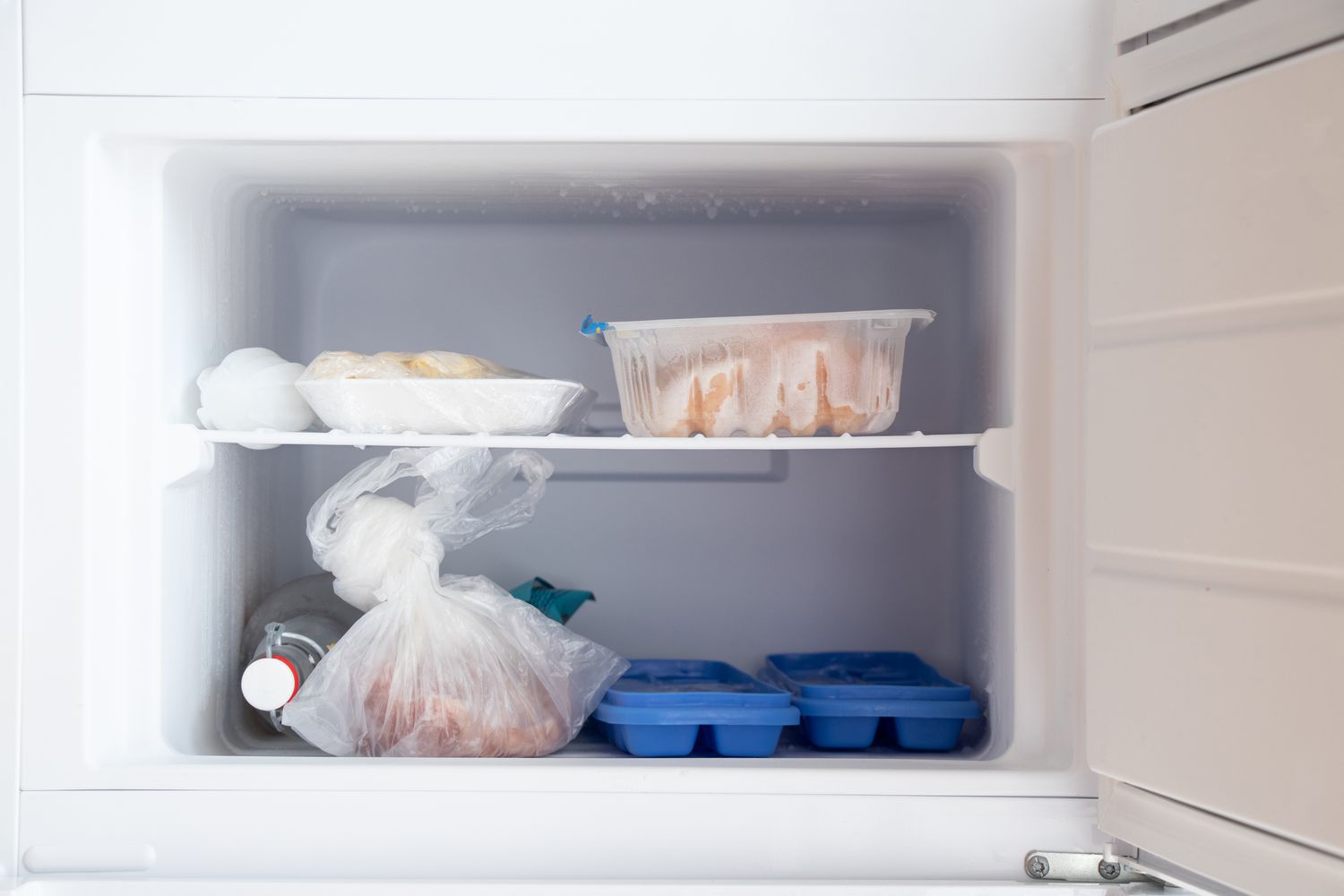



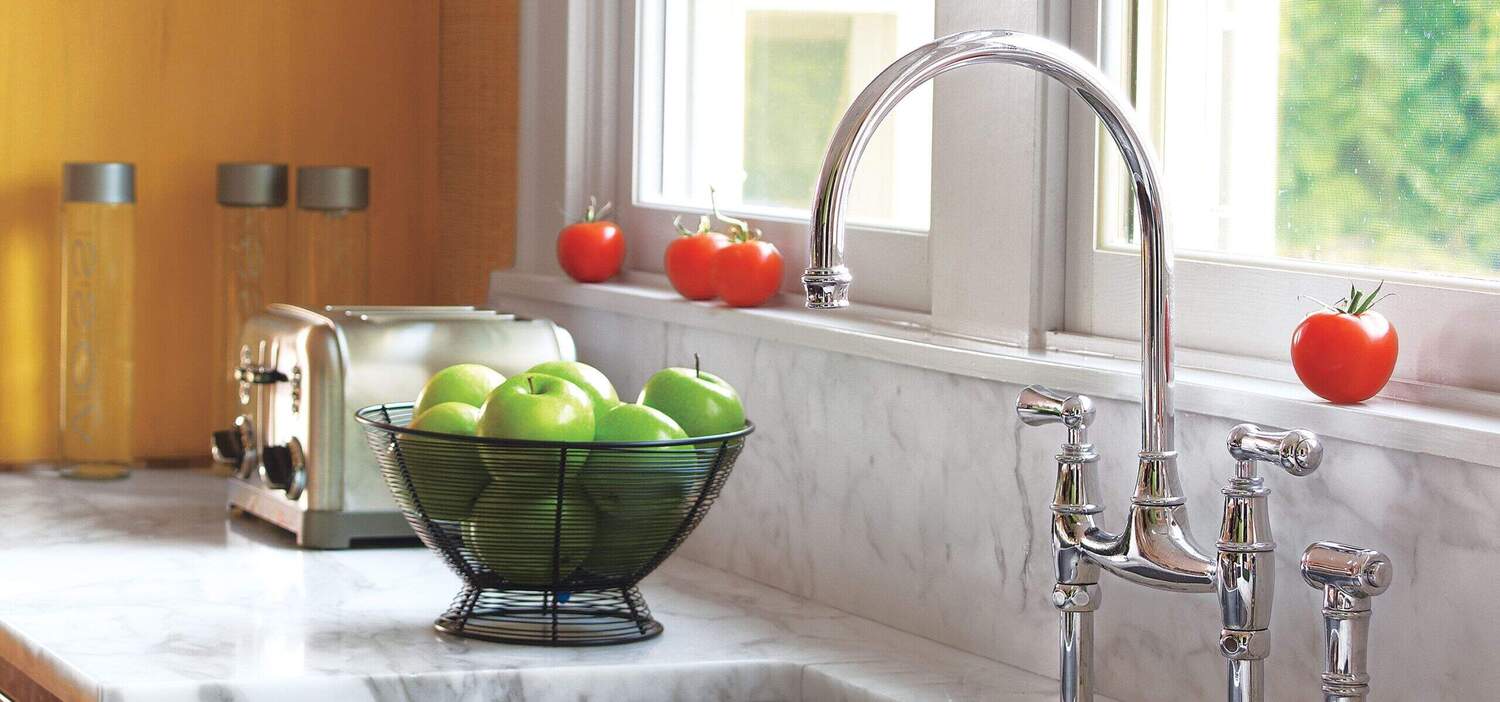
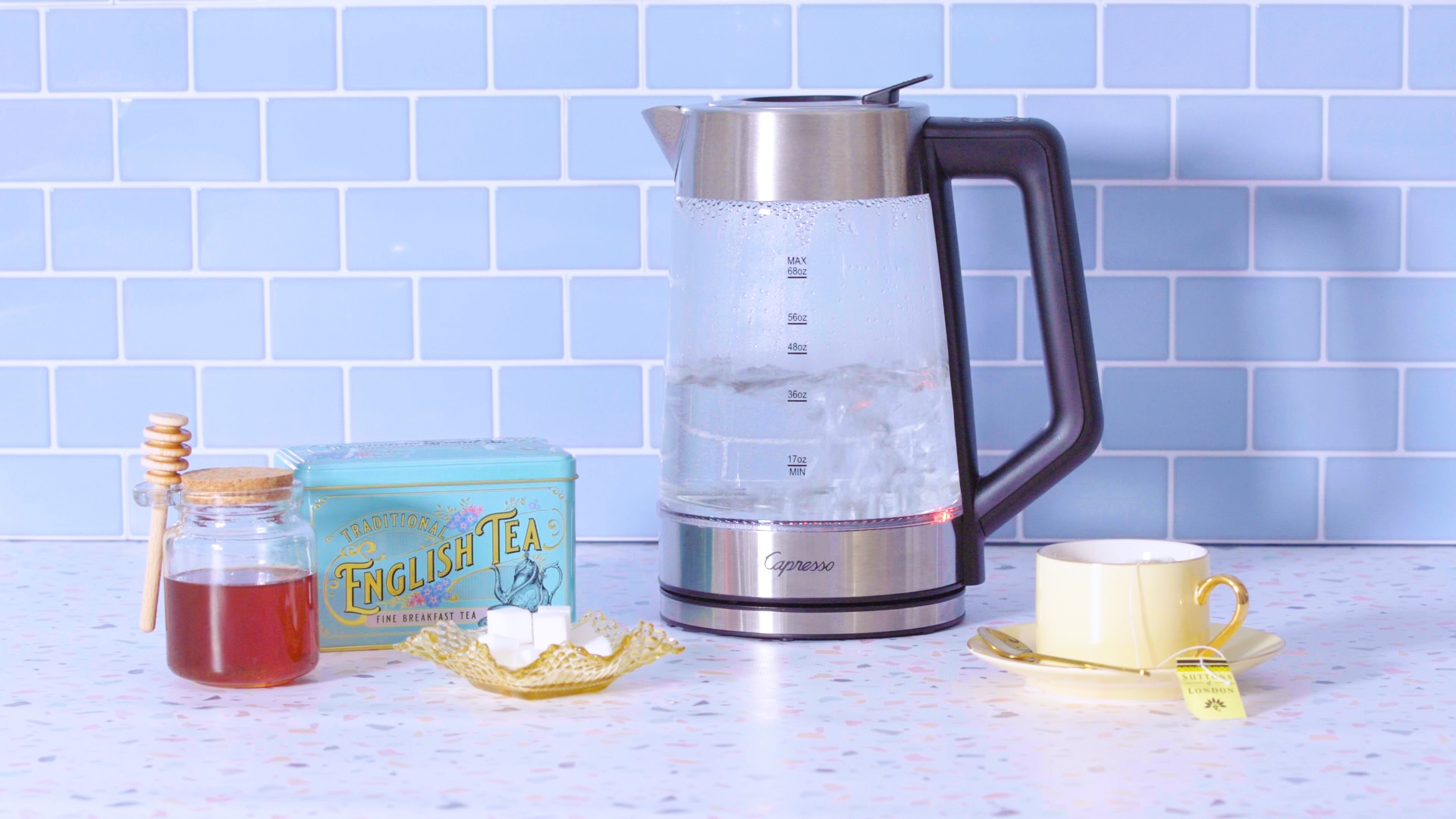
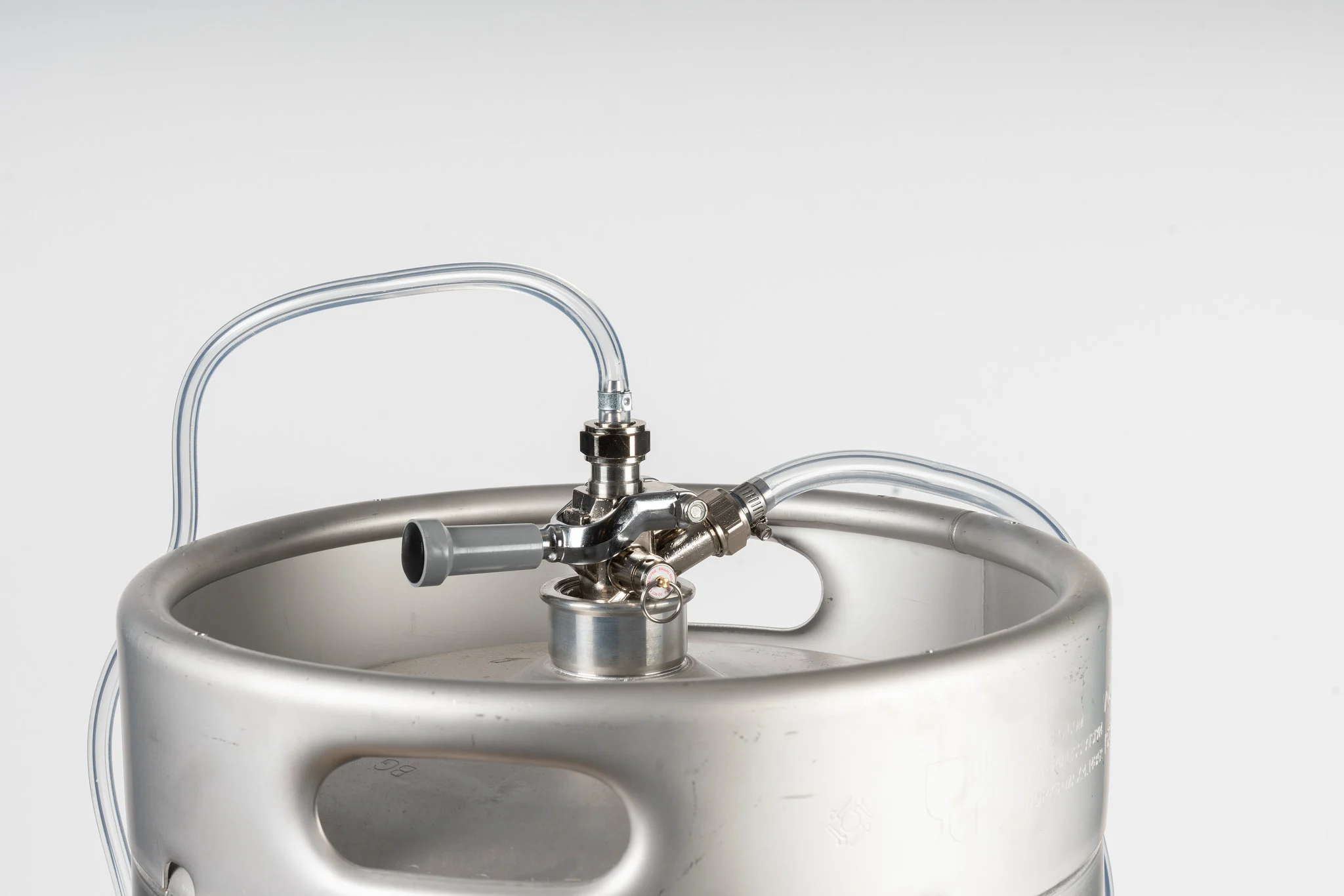





0 thoughts on “How Does A Steamer Work For Food”